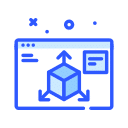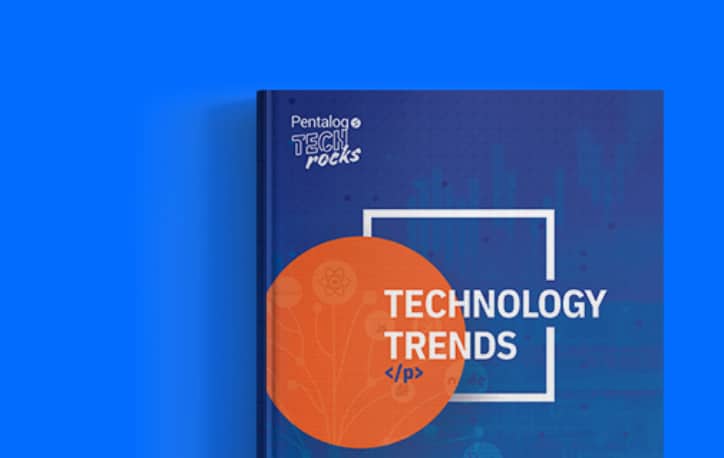Operational efficiency remains a key challenge for enterprise-level businesses, especially in an age when customers have very little patience and the competition is high. It has become imperative for businesses to wring latency out of the delivery pipeline, improve infrastructure and operations, develop practices and processes that promote automation and collaborative solutions.
But what exactly is operational efficiency, why is it important and what key components should be part of your operational efficiency goals?
Let’s discuss this in detail.
What is Operational Efficiency?
In modern business-speak, operational efficiency refers to creating or delivering of goods or services faster, cheaper, better, more accurate, more efficient. In the age of IoT, digital dependency and rapidly-changing technology, operational efficiency basically mean catering to the expectations of the customer, gaining a competitive edge and improving internal operations to meet with rising demands.
Why is Operational Efficiency Important?
It goes without saying that all businesses benefit from being efficient, but, in today’s world, if you aren’t being efficient, you’re wasting money and effort.
Operational efficiency focuses on being cost-effective while increasing output and growing the business to meeting with consumer demands. Additionally, it also means keeping competitors at bay by being faster, smarter and more innovative.
The end goal of operational efficiency is to move the company to an entirely new level without compromising on quality or productivity. Moreover, operational efficiency is motivated by the need to meet customer demand and increase customer retention. In a volatile market, businesses cannot risk losing nearly 33% of customers to competitors over slow, inefficient processes.
If So Important, Why Are Companies Still Struggling with Operational Inefficiency?
Although businesses know they need to be efficient, they are still struggling with common issues that become bottlenecks to any innovation initiatives. The most common struggles are:
- Dependency on Manual Processes: Even today, there is a dependency on manual efforts in managing redundant activities in an organization. Take, for example, cleaning and maintaining records, an activity that is still being done by the IT staff. Similarly, processes in production phases do not only slow-release speeds but are also the leading cause of faulty releases.
- Lack of Effective Collaboration: Enterprise-level organizations often have departments working in isolation. Development and Marketing, Sales and Customer Service often do not work hand in hand, which increases bottlenecks and other operational problems.
- Lack of Testing and Monitoring: Automated performance testing and monitoring is not the focus even though it plays a significant role in improving customer experience.
- Dependency on Legacy Systems: Companies are afraid to let go of their legacy systems and continue to rely on them for their day-to-day operations. This is one of the biggest reasons why any digital transformation initiative or operational efficiency initiatives fail.
Read how a legacy system and poor data quality is the leading cause of digital transformation plan failures and what you can do to manage it.
- Poor Data Leading to Multiple Issues: Experts claim data as the new oil, but businesses are far from obtaining accurate data. With multiple data sources siloed away in their respective departments, with human input errors and other quality issues, poor data is the leading cause of failed initiatives. Be it digital transformation, customer experience enhancement, internal operations, data plays a critical role in all. If businesses have flawed or corrupt data, it can lead to costly mistakes, poor customer service, fines and penalties, security issues and many more.
- Cyber Security Risks: Security breaches are becoming increasingly common. Part of it has to do with a business’s reluctance to updating its systems and investing in advanced security measures. IT teams are stuck with resolving minuscule problems instead of focusing on solving what matters most.
- Poor Customer Service: Efficiency isn’t just about optimizing company services or processes. It’s about ensuring quality customer service. Businesses need to focus on retaining their customers and focus on brand loyalty.
Most of these problems can be resolved if companies focus on doing things right. This includes ensuring their goals and objectives are transparent, clear, achievable and understood by everyone. More importantly, the management and the staff must be in sync and ensure that everyone is aware of their responsibilities, and are equipped with the right tools, skills, and support to carry out their jobs.
Key Components that Should Be Part of Operational Efficiency Goals
If you’ve decided to meet certain efficiency goals, here are a few important components that should be part of your overall goals.
- Creating a Single Source of Truth: Most of your problems including customer service, departmental isolation, poor insights, collaboration issues can be resolved by using a single source of truth. The key benefit of having a single source of truth is that everyone can work towards the same goals. You can achieve this by bringing all your scattered information into a single platform and make it one of the first and most important steps in obtaining operational efficiency.
- Initiate a Data Transformation Plan: Operational efficiency begins from the most overlooked, yet the most important component in the organization – data. All that data of your employee, your customers, your vendors, your logistics, your supply, and distribution is raw data that needs to be cleansed, optimized and made usable for analytics and business intelligence. Without accurate data, it would be impossible to create a source of truth and to improve processes.
- Measure and Monitor: You can’t change what you don’t measure. Adopt SMART goals, get consistent feedback from your data to guide your company’s strategy. While every decision is not based on data, most decisions are made more confidently and accurately with data.
- Invest in Automated Solutions: Automate what can be automated. For example, you can use data quality solutions to achieve components 1, 2 and 3. You don’t need to spend millions of dollars on hiring teams and specialists when a software solution can get the job done. This theory could be applied to every business area – marketing, sales, customer service etc.
- Focus on Creating Business Processes: Large enterprises achieve efficiency by creating and following a process. It’s when you’re developing a business process do you recognize flaws and inaccuracies in your existing infrastructure. To create an effective business process though, you need the collaboration of your core team members, data to rely on and infrastructure to support new processes.
- Streamline Customer Services: Customers today are impatient. They expect efficiency from businesses. Be it responding to them instantly on chat, be it delivering an item earlier than the expected date, be it efficient customer service – businesses need to be on their toes if they want to retain customers.
- Outsource Tasks and Projects: The future is remote. For tasks that can easily be outsourced, don’t hire in-house just to maintain control. Invest in a good outsourced agency or freelancer to manage tasks that take up a lot of unnecessary time. Hiring, recruiting, finding talent, finding leads, marketing etc. can all be outsourced. Outsourcing helps your in-house talent remain focused on productive activities related to your business’s core competencies.
- Develop a Long-term Digital Transformation Plan: If your business is still relying on legacy systems and outdated platforms, you might need to develop a long-term digital transformation plan. Obsolete systems are a strain on employees and company resources, not to mention, they also create poor customer experiences. Identify the problems your organization is facing at the moment and carefully determine short and long-term business objectives to carefully map technology solutions to those objectives.
- Invest in Employee Training: Efficiency is largely still a human-based effort. This means if you want your sales team to stay at the top of their game, or your IT staff to focus on enhancing security, or your marketing team to stay updated with the latest trends and happenings, you need to invest in employee training. Without implementing a training program, your staff will have a hard time accepting any change in the organization. To minimize employee resistance, always invest in educating them before you implement a new system or process change.
- Stand Out in the Marketplace: Make efficient use of tools that allow you to know where you stand in the market. Compare a business, produce or service against your competitors. Monitor and measure price, performance customization to see how you can stand out in the market. But most importantly, focus on processes you can employ to keep your customers from moving to competitors.
How Do You Measure Operational Efficiency Initiatives?
Quite simple: the output to input ratio. You will define your own metrics based on your long-term goals, industry, business size, and other relevant aspects. You will create performance indicators to see how successful your initiatives are.
For example, if data cleansing is your key initiative, then you can measure the number of customer complaints or errors that have reduced. You can also measure the number of hours your IT staff has saved on correcting flawed data.
Similarly, if you want to measure employee efficiency, then employee labor is your input. There are dozens of ways you can measure operational efficiency initiatives, but the basic idea is to simply see the returns of your efforts.
Conclusion
In summary, operational efficiency is the steps companies take to streamline core processes, optimize business performance and meet increasing consumer demands. Operational efficiency, in turn, leads to organizational excellence – a state of near perfection that most organizations aspire to reach. While perfection is a flawed ideology, companies can still aspire to get a competitive edge, increase brand loyalty and keep up with new age demands by improving their core processes.
Data Ladder helps organizations clean and standardize data, deduplicate and obtain a single source of truth. Get in touch to see how we can help your business to be operationally efficient with data.




































